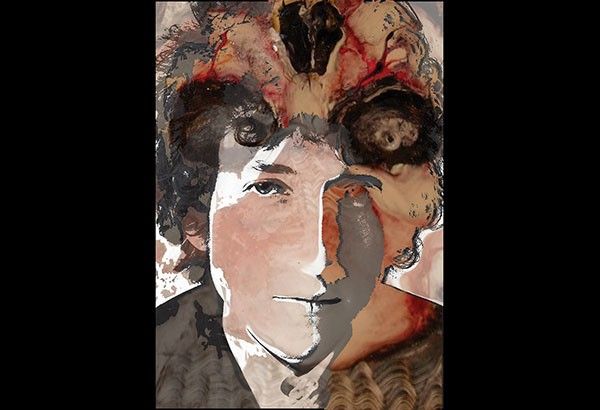‘Song and dance man’ Bob Dylan’s back pages

Those were the exact words the latest winner for the Nobel Prize in Literature, Bob Dylan nee Robert Zimmerman, used to describe himself in typical self-satirizing fashion eons ago, when an interviewer tried to draw him out further to talk about his work and whether he thought of himself “as a singer or as a poet?” “I think of myself more as a song and dance man,” Dylan joked, and he could have added, trying to earn enough for the next meal and a room to crash in. Dylan the folksinger, after all, comes from the bardic tradition of the poet, as social media commentators are wont to point out in defense of the Swedish academy’s choice to depart from awarding the conventional writer.
But if you listen to his songs closely, from the 1960s era of the Vietnam War and the Civil Rights Movement, to the 1970s gypsy phase of Rolling Thunder Revue and dissolution of his marriage, the collaborations with The Band in the house of Big Pink, through his Born Again Christian episode, his return to the ranks of fallen secularism and his aging gracefully if not too wisely and well, the voice gruffly sounding like a cross between a wasted Tom Waits and Sinatra, don’t they sound like short stories and poems or some kind of serial novel — enough to raise those Greeks and would-be Greeks lying in state with coins over their eyes?
Many years ago he came out with a book of prose, a novel in staccato-like structure called Tarantula, admittedly a difficult read but right up there with other counterculture classics that stymied the establishment back then, like John Lennon’s A Spaniard in the Works and William Burroughs’ Naked Lunch. You might say the writer was — as the tabloids would likely conclude — “high on drugs,” and thus soon to be placed on watch list of the barangay tanods of Greenwich Village.
Yet who hasn’t heard Blowin’ in the Wind, Mr. Tambourine Man or Like a Rolling Stone playing at one time or another through static over the radio, or such tender anthems as Lay Lady Lay, If Not for You and I Shall Be Released on the rundown turntable? A survey on YouTube would reveal a wealth of material particularly from the mid-‘70s Rolling Thunder Tour, including duets with bosom buddy Joan Baez and outtakes backed by the gypsy violinist Scarlet Rivera and bass player Rob Stoner: here comes the story of the Hurricane, one more cup of coffee before I go to the valley below.
And how about this verse from Oh Sister, from the album “Desire”: “Oh sister when I come to knock on your door/ don’t turn away you’ll create sorrow/ time is an ocean but it ends at the shore/ you may not see me tomorrow.”
He took his name perhaps aptly enough from the Welsh poet Dylan Thomas, whose work also has a brave cadence, and if you read Thomas’ A Child’s Christmas in Wales, could you not almost hear a Bob Dylan acoustic guitar in the background strumming along with the wind in some faraway place of childhood irretrievable?
In My Back Pages the bard sang: “But I was so much older then/ I’m younger than that now.” The Keith Jarrett Trio has a version plainly unplugged, and though no words are sung you can decipher those very lines as the piano, bass and drums interplay.
The inimitable Axl Rose of the metal band Guns ‘n Roses has his take on Knocking on Heaven’s Door, one of the most covered Dylan songs, and here Slash instigates pyrotechnics that make it almost indistinguishable from the original as heard on the soundtrack of the movie Pat Garret and Billy the Kid, where the troubadour’s voice hollows out as he sees those dark clouds coming around and lays his guns on the ground.
And who can forget the superband Traveling Wilburys of the ‘80s, which brought together Dylan, George Harrison, Roy Orbison, Tom Petty and Jeff Lynne? Tweeter and the Monkey Man is vintage Dylan, the storyteller at his humorous best though we may not always know what he means. Then his work with The Band, the double-LP The Basement Tapes and Planet Waves, now considered classic by anyone’s standards, both narrative and music-wise.
You will still hear his songs in folk houses from Malate to Baguio to Anonas extension, the dwarfs and fireeaters dancing in their cups. So yes, a song and dance man for the Nobel, why not, it’s just entertainment, no need for deeper hugot. In an interview with Rolling Stone circa “Desire” and “Blood on the Tracks,” Dylan gave the impression of someone who understands the human condition. To paraphrase the writer — and if one truly understands anything, there can only be compassion, only pity.
Like Woody Guthrie before him riding on trains across the badlands of America armed only with guitar and a story to tell, Dylan was bound for glory. ZOETROPE Juaniyo Arcellana















